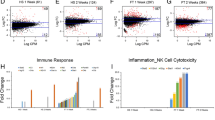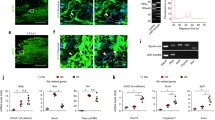Abstract.
Following injuries to the adult mammalian CNS meningeal cells migrate into the lesion cavity, forming a fibrotic scar and accessory glia limitans. This infiltration re-establishes the meningeal layer that normally surrounds the CNS, and so reforms the barrier between the CNS and external environment, thus protecting the damaged region from events outside it. However, the newly formed meningeal layer and glia limitans may impede subsequent nerve regeneration through the injured region. This structure can be modelled in vitro using an astrocyte/meningeal co-culture system. We have examined patterns of neurite outgrowth on such cultures, and we find that axons cross readily from meningeal cells to astrocytes, but are unwilling to cross in the other direction. The distribution of cell surface and matrix molecules on these cultures is described, and the effect of various pharmacological interventions which can affect axon growth between the two cell types is summarised in this review.
Similar content being viewed by others
Author information
Authors and Affiliations
Additional information
Electronic Publication
Rights and permissions
About this article
Cite this article
Shearer, M.C., Fawcett, J.W. The astrocyte/meningeal cell interface – a barrier to successful nerve regeneration?. Cell Tissue Res 305, 267–273 (2001). https://doi.org/10.1007/s004410100384
Received:
Accepted:
Published:
Issue Date:
DOI: https://doi.org/10.1007/s004410100384




